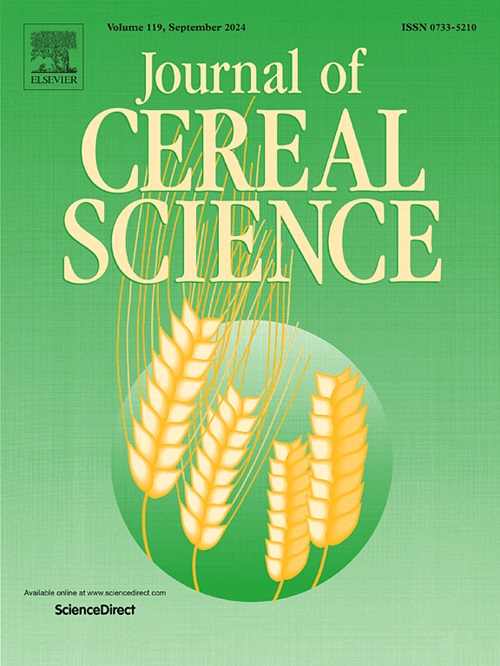经过加工和不同程度碾磨的生物强化和非生物强化大米的综合营养概况
IF 3.7
2区 农林科学
Q2 FOOD SCIENCE & TECHNOLOGY
引用次数: 0
摘要
水稻生物强化是消除微量营养素缺乏的一种有效方法。碾磨和煮熟会影响生物强化大米的潜在优势。因此,本研究旨在评价碾磨(5%、10%和15% DOM)对未煮熟、半煮熟生物强化(BF)和非生物强化(NBF)大米综合营养成分和形态的影响。扫描电镜观察显示水稻的形态和晶体结构发生了变化。研磨对15% DOM的养分影响显著。然而,半煮糙米和半煮精米(PM)的营养成分保留得很好,表现出更好的血糖反应。压力蒸煮对大米的营养成分没有显著影响,但提高了大米的淀粉消化率。除此之外,煮熟的大米中铁的保留率(63 - 86%)高于未煮熟的大米(48 - 79%)。在大多数品种中,煮熟的PM大米的锌保留量低于15% DOM的NPM大米。该研究将有助于优化高炉大米的碾磨程度,以更好地保留营养物质,特别是熟米中的铁和锌,从而最大限度地提高营养效益,解决隐性饥饿问题。本文章由计算机程序翻译,如有差异,请以英文原文为准。
Comprehensive nutritional profile of biofortified and non-biofortified rice subjected to processing and different degrees of milling
Biofortification of rice is an effective method to eliminate the plethora of micronutrient deficiency. Milling and parboiling could affect the potential advantage of biofortified rice. Therefore, the present study was carried out to evaluate the effect of milling (5 %, 10 %, and 15 % DOM) on comprehensive nutritional profile, morphology of non-parboiled and parboiled biofortified (BF) as well as non-biofortified (NBF) rice. Scanning electron micrographic observation showed alteration in morphology and crystalline structure of rice. Milling significantly affected nutrients at 15 % DOM. However, nutrients were well retained in parboiled brown and parboiled milled (PM) rice and exhibited better glycemic response. Pressure cooking of rice did not have substantial effect on nutrient content but increased the starch digestibility of rice. In addition to this, retention of Fe in cooked PM rice was high (63–86 %) as compared to non-parboiled milled (NPM) rice (48–79 %). In most of the varieties, zinc retention in cooked PM rice was less than NPM rice at 15 % DOM. The study will help to optimize the degree of milling in BF rice for better nutrient retention particularly, iron and zinc in cooked rice, thereby maximizing nutritional benefits to address hidden hunger.
求助全文
通过发布文献求助,成功后即可免费获取论文全文。
去求助
来源期刊

Journal of Cereal Science
工程技术-食品科技
CiteScore
7.80
自引率
2.60%
发文量
163
审稿时长
38 days
期刊介绍:
The Journal of Cereal Science was established in 1983 to provide an International forum for the publication of original research papers of high standing covering all aspects of cereal science related to the functional and nutritional quality of cereal grains (true cereals - members of the Poaceae family and starchy pseudocereals - members of the Amaranthaceae, Chenopodiaceae and Polygonaceae families) and their products, in relation to the cereals used. The journal also publishes concise and critical review articles appraising the status and future directions of specific areas of cereal science and short communications that present news of important advances in research. The journal aims at topicality and at providing comprehensive coverage of progress in the field.
 求助内容:
求助内容: 应助结果提醒方式:
应助结果提醒方式:


